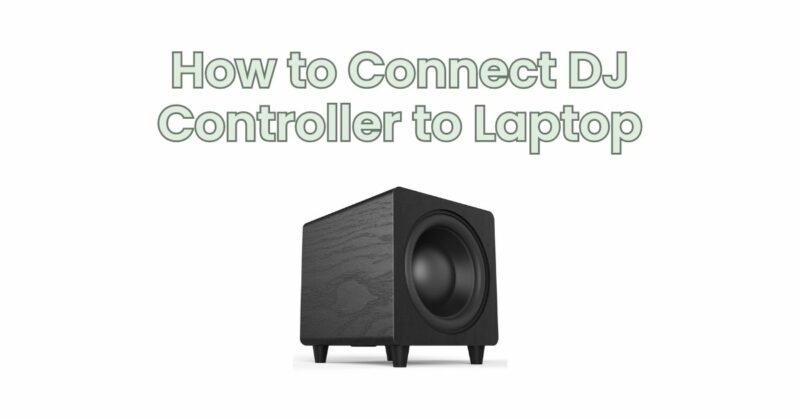In the world of modern DJing, connecting a DJ controller to a laptop is a fundamental step in unlocking the full potential of your setup. By establishing this connection, you can harness the power of DJ software, access a wide range of digital music libraries, and take advantage of advanced mixing and performance features. In this article, we will guide you through the process of connecting a DJ controller to a laptop, allowing you to seamlessly integrate your hardware and software for a dynamic and immersive DJing experience.
Step 1: Check Compatibility and Ports Before getting started, ensure that your DJ controller and laptop have compatible connection options. Most DJ controllers feature USB connections, while laptops commonly have USB ports. Check the user manual or product specifications of your DJ controller and laptop to verify compatibility and available ports.
Step 2: Install DJ Software To fully utilize your DJ controller, install the appropriate DJ software on your laptop. The software provided by the manufacturer or popular DJ software such as Serato DJ, Traktor, or Virtual DJ are commonly used options. Visit the software manufacturer’s website and follow the instructions to download and install the software on your laptop.
Step 3: Connect the DJ Controller Connect one end of the USB cable to the USB output port on your DJ controller. Plug the other end of the cable into an available USB port on your laptop. Make sure the connection is secure.
Step 4: Power On the DJ Controller Power on your DJ controller by connecting it to a power source or via USB bus power, depending on the model. The controller should automatically be recognized by your laptop.
Step 5: Launch DJ Software Launch the DJ software on your laptop. Allow the software a moment to recognize and establish a connection with your DJ controller. If prompted, follow any on-screen instructions to complete the setup process.
Step 6: Configure Audio Settings Access the audio settings within your DJ software. Set the appropriate audio input and output options, ensuring that the DJ controller is selected as the preferred device for both. Adjust the sample rate, buffer size, and other settings as recommended by the software or your specific hardware setup.
Step 7: Test and Calibrate Play a track through your DJ software and monitor the audio output. Ensure that the sound is coming through the DJ controller’s audio outputs, such as the master or booth outputs. Adjust the volume levels on the controller and software as needed. Calibrate the input levels and audio settings to ensure accurate control and optimal sound quality.
Step 8: Additional Considerations Explore the features and functionalities of your DJ software and controller. Configure settings related to hot cues, loops, effects, EQ, and filters to enhance your mixing and performance capabilities. Take advantage of any hardware-specific features offered by your DJ controller, such as touch-sensitive jog wheels or performance pads.
Conclusion: Connecting a DJ controller to a laptop is a vital step in unlocking the full potential of your DJ setup. By following the steps outlined in this article and ensuring compatibility between your DJ controller and laptop, you can seamlessly integrate your hardware and software, opening up a world of creative possibilities. Enjoy the benefits of powerful DJ software, access to extensive music libraries, and advanced mixing and performance features. Embrace the digital realm of DJing and elevate your performances to new heights with a connected DJ controller and laptop. Let your creativity flourish as you seamlessly mix and manipulate tracks, captivate your audience, and create unforgettable DJ experiences.


